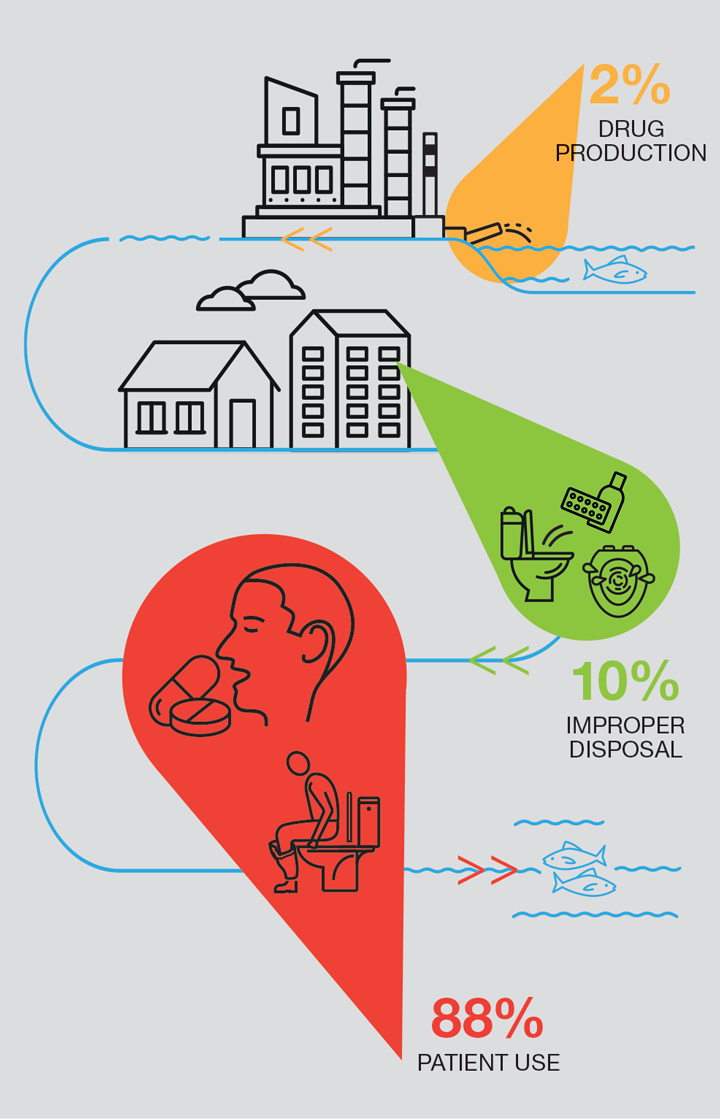Something in the water
Managing the safe discharge of active pharmaceutical ingredients during drug production
ONE of the unintended but inevitable consequences of delivering life-changing medicines to patients is that active pharmaceutical ingredients (APIs) can find their way into the environment. This mostly occurs through patient use and excretion, but they can also enter the environment during manufacture and improper disposal (see Figure 1).
On a global scale, pharmaceutical manufacturing contributes just a small part of the total environmental burden of pharmaceuticals. However, at a local level, it is recognised that manufacturing discharges can cause hot spots, unless these are adequately assessed and controlled by manufacturers.

What’s the problem?
As the limits of detection for analytical chemistry get lower and the range of analytes that can be detected increases, previously undetectable amounts of APIs and other chemicals are becoming easier to find in the environment. Some APIs can now be quantified at the sub-ng/L level in rivers, lakes and drinking waters. In 90-95% of cases the environmental risks posed by the presence of these medicinal products in surface waters is likely to be low or insignificant. However, there are a few notable exceptions.
Unlike many other chemicals that enter the environment, APIs are designed to have highly specific interactions with their biochemical target in patients. However, many of these drug targets are highly conserved across taxa and there is the potential to interact with aquatic life, higher predators and humans via non-therapeutic exposure. To date, only one pharmaceutical has been solely linked to a population-level impact in the wild. This was the non-steroidal anti-inflammatory drug diclofenac. Veterinary use of diclofenac was found to cause secondary poisoning in specific Asian vulture populations that fed on the carcasses of treated cattle. This indirect exposure to diclofenac resulted in a >95% reduction in these sensitive vulture populations. Another example includes the environmental exposure of fish to synthetic oestrogens resulting in the feminisation of male fish in rivers and lakes. In this case, the cause cannot be attributed to just pharmaceuticals, since natural hormones and other xeno-oestrogens also contribute towards these feminisation effects. More recently, a range of selective serotonin uptake inhibitors and other psychologically active medicinal products have been implicated in behavioural impacts on fish and birds. The population relevance of these behavioural studies is currently unknown and under further investigation. The impact of combined exposure or mixture effects that includes environmental mixtures of APIs, together with other stressors, is another concern that is being investigated.
Recent Editions
Catch up on the latest news, views and jobs from The Chemical Engineer. Below are the four latest issues. View a wider selection of the archive from within the Magazine section of this site.




